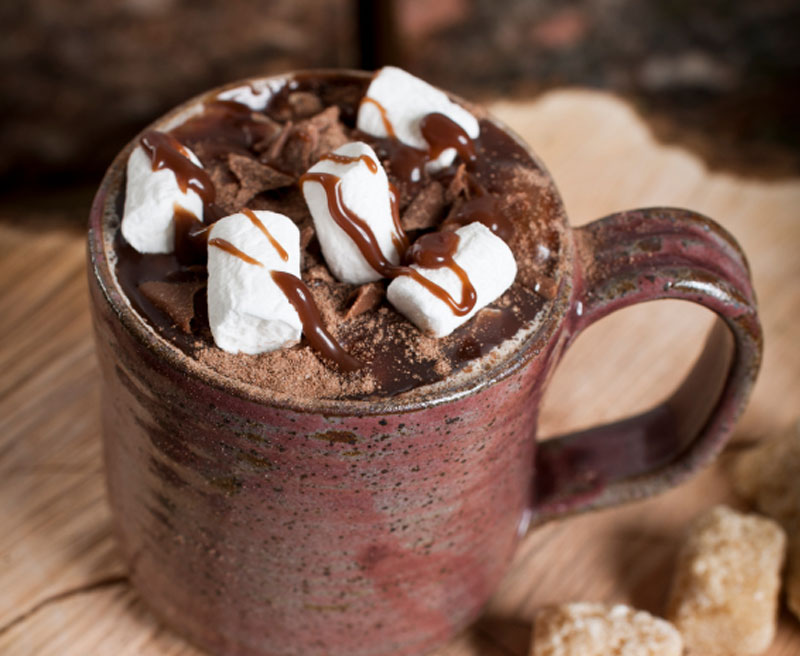Frozen-yogurt brands, like other frozen-dessert concepts before them, are staring down the harsh reality of slower sales during colder months. They’re also facing stiff competition from dozens of similar brands growing across the U.S.
Some fro-yo chains, however, are finding ways to conquer both challenges this fall and winter.
Chicago-based Forever Yogurt, for example, is offering a line of gourmet hot chocolates called Froth. Mandy Calara, founder and CEO of Forever Yogurt, says winter yogurt sales are grim compared with the boom of summer. While stores generally do between $100,000 and $150,000 in sales per month in June, July, and August, he says, in December and January, monthly sales ring in between only $25,000 and $30,000.
“It’s just naturally slower,” Calara says. “We’re targeted in the Midwest and East Coast for continued growth. And we thought we needed to bring something in that’s inviting for our customers during the colder months of the year. We were trying to create something that’s still fun and creative and different from what people could get somewhere else.”
The Froth hot chocolate bar offers an array of flavors and toppings, including Andes mints, Nutella, Hershey’s milk chocolate, Ghirardelli dark chocolate, Nestle Mexican chocolate Abuelita, peanut shavings, and three types of marshmallows.
“It’s definitely a very premium hot chocolate compared to what others are offering,” Calara says.
Forever Yogurt offered the product in some stores last year. Now it’s in all six locations, and the company is heavily marketing it this winter. If it’s successful, Calara hopes the cocoa bar will have a strong enough following to stand as its own business.
“We’re going to give it a pretty strong effort this year to see if we can get some good awareness with our customers,” he says. “We’re going to slowly try to evolve this into something that can nearly stand independent as its own store.”
Alabama-based 32 Degrees, meanwhile, is offering a line of warm desserts called Bottomz. Jenny Buha, director of development and marketing for the 16-unit chain, says the new line gives customers another reason to commit their loyalty to 32 Degrees.
The Bottomz line comes in three varieties: chocolate lava cake, fudge-filled chocolate chip cookie, and apple pie. The treats are microwaved in the store before being topped with frozen yogurt and an array of toppings from the self-serve units. The treats are also good enough to be enjoyed solo, Buha says.
“Honestly, if they were plated differently, they could be served at four- or five-star restaurants,” she says. “They are so good.”
Innovation is a key focus for 32 Degrees, which has a pipeline of new products in research and development. The company recently released a line of frozen Greek yogurt and a blended Twister product, and it hosts a variety of fruit and other toppings. Buha says the variety allows the brand to position itself as a snack, lunch substitute, or dessert.
That’s good news for customers and franchisees, she says, especially as the company looks to spread north from its Alabama base.
“As we’re expanding into the Northeast and the Midwest, [franchisees] obviously deal with colder climates,” Buha says. “And Bottomz gives them another option to bring people in during colder weather. “
Frozen-dessert sales in the U.S. were nearly flat in 2011, with concepts doing about $5 billion in annual sales, says Mary Chapman, director of product innovation for Technomic, a Chicago market research and consultancy firm. Technomic doesn’t track frozen-yogurt concepts separate from other frozen-dessert brands, but Chapman approximates that frozen-yogurt sales were up about 18 percent in 2011.
Chapman says offering warm items during the winter months seems like a smart way for fro-yo shops to sustain sales momentum coming out of summer. But she wonders whether customers will make special trips to standalone units for items like brownies or hot chocolate.
“In malls and other high-traffic places where they could do targeted marketing and sampling, frozen-dessert shops would have a good opportunity to pull in some customers for a treat,” Chapman says.

